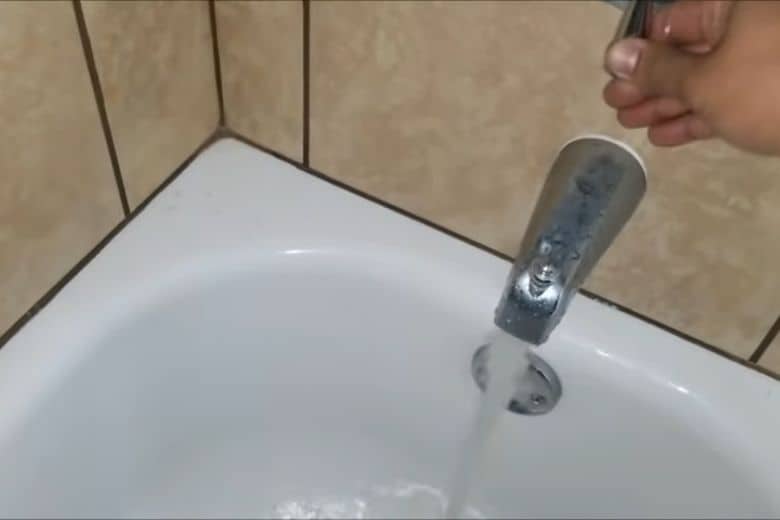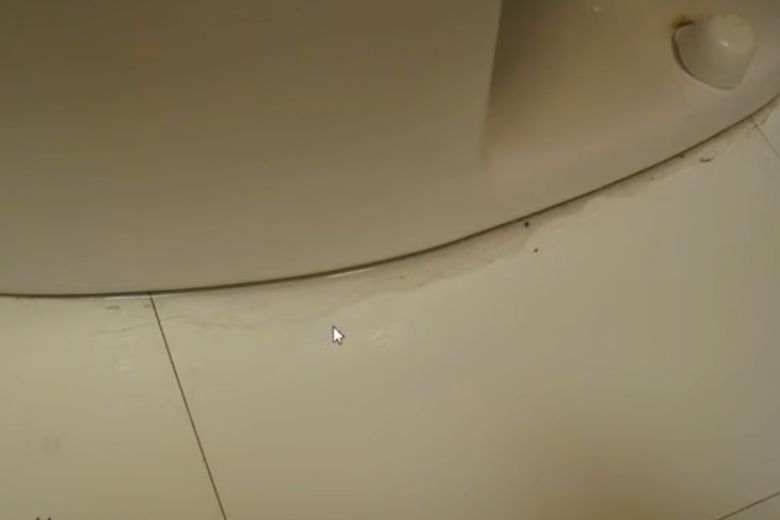Imagine you’ve just finished a relaxing shower, and as you reach for the faucet handle to turn off the water, and it refuses to budge. No matter how hard you twist or turn. The stubborn shower faucet won’t shut off.
No doubt this situation will leave you in a state of perplexity and frustration. You immediately begin to think, why shower faucet won’t turn off?
Don’t worry; at some point, many people have experienced this unexpected situation. Meanwhile, it indicates an underlying problem that needs attention. Several factors can contribute to this issue, such as worn-out components, mineral deposits, incorrect installation, etc.
Today we will identify the root cause of this issue. Therefore, we will provide you with step-by-step troubleshooting tips to rectify it.
Common Causes of a Shower Faucet Won’t Turn Off
There can be various reasons why your shower faucet refuses to turn off. Identifying the root cause is crucial to determine the appropriate solution. Let’s look at some common culprits.
1. Worn-out Cartridge or Valve
One common reason for a malfunctioning shower faucet is a worn-out cartridge or valve. After years of use, these internal components can deteriorate due to constant usage and exposure to water. In fact, sediment buildup or mineral deposits can exacerbate the issue. They are causing the faucet to remain in the “on” position even when you attempt to turn it off.
However, if you notice the faucet, the handle feels loose. On the other hand, the water dripping even when the handle is fully closed. Meanwhile, the cartridge or valve likely needs to be replaced.
2. Faulty Shower Handle or Knob
A loose or broken shower handle or knob can hinder the turning motion of the faucet. If the handle feels wobbly or doesn’t engage properly when turned. The handle mechanism likely needs attention. Once more, if the handle is damaged or doesn’t fit snugly onto the valve stem. It can interfere with the proper functioning of the faucet.
3. Water Pressure Imbalances
Uneven water pressure also can contribute to a shower faucet that won’t turn off. High water pressure can cause excessive force against the internal components. As a result, they are making it difficult to close the valve fully. Conversely, low water pressure might result in inadequate sealing of the faucet, leading to persistent dripping or no water issue.
4. Mineral Buildup
Mineral buildup is another culprit behind a shower faucet that won’t turn off. Hard water contains minerals like calcium and magnesium. It naturally accumulates and obstructs the proper functioning of the faucet. This buildup can lead to stiffness and difficulty in operating the faucet handle.
5. Malfunctioning Cartridge or Stem
Shower faucets often utilize cartridges or stems to regulate water flow. If these components become faulty or worn out, they can impede the turning off of the faucet. Replacing the cartridge or stem might be necessary to rectify the issue.
6. Sediment or Debris Buildup
Accumulation of sediment or debris within the faucet can obstruct its proper functioning. This buildup can affect the movement of internal components. Besides making, it hard to turn off the faucet completely. Cleaning or removing the sediment is essential to restore regular operation.
7. Incorrect Installation
Sometimes, an improperly installed shower faucet can cause a problem. If the faucet components were not installed correctly. Moreover, if the wrong parts are used, it can result in operational issues.
Solutions to Fix a Shower Faucet That Won’t Turn Off
Now that we’ve identified some common causes let’s explore the solutions to fix a stubborn shower faucet:
Step 1: Shutting off the water supply
Before attempting any repairs, it’s crucial to turn off the water supply to the shower. Locate the main water shut-off valve for your home or the specific shut-off valve for shutting off the water supply. Because it will prevent any accidents or further water damage during the working process.
Step 2: Inspect the Faucet Handle
Start by inspecting the faucet handle or knob for any visible damage or looseness. If you notice any issues. As a loose or cracked handle, it may need to be replaced. Refer to your shower faucet’s user manual. Besides, you can contact the manufacturer for specific instructions on handle replacement.
Step 3: Remove and Clean the Cartridge/Valve
For cartridge or valve-related problems, you’ll need to remove and clean or replace the faulty component. Begin by turning off the water supply to your shower. Next, disassemble the faucet handle and locate the cartridge or valve. Remove it carefully and clean it thoroughly. Use a mixture of vinegar and water to dissolve any mineral deposits or sediment buildup.
If cleaning doesn’t resolve the issue. In that case, you might need to replace the cartridge or valve with a new one.
Step 4: Replacing the Shower Valve or Cartridge
If you suspect a worn-out cartridge or valve is the culprit, replacing these components is usually the most effective solution. Start by turning off the water supply to the shower. Then, remove the faucet handle and trim to access the cartridge or valve.
Follow the manufacturer’s instructions to replace the damaged parts with new ones. Finally, reassemble the faucet, turn on the water supply, and test if the issue has been resolved.
Step 5: Cleaning or Unclogging the Faucet
Sediment or debris buildup can hinder the turning off the shower faucet. Use a cloth or brush to clean the faucet components thoroughly. If the buildup is severe, you should disassemble the faucet and soak the parts in a vinegar solution to dissolve the sediment.
Begin by turning off the water supply and disassembling the faucet. Soak the components in a vinegar solution to dissolve mineral deposits. Use a soft brush or toothbrush to scrub away any remaining buildup.
Rinse the parts thoroughly and reassemble the faucet. Turn on the water supply to check if the issue has been resolved.
Step 6: Adjust Water Pressure
You can adjust the pressure regulator or install a pressure-balancing valve to address water pressure imbalances. A pressure regulator can help maintain an optimal water pressure level, ensuring the smooth operation of the shower faucet.
You can consult a professional plumber to assess your water pressure levels.
When to Seek Professional Help
While some shower faucet issues can be resolved through DIY troubleshooting. But there are instances when professional assistance is necessary. Consider seeking the help of a licensed plumber if:
- The problem persists after attempting the troubleshooting steps.
- You are uncomfortable performing repairs or need the essential tools.
- The shower faucet is part of a complex plumbing system that requires expert knowledge.
Preventive Measures for Future Maintenance
To avoid future instances of a shower faucet that won’t turn off, consider implementing these preventive measures:
- Regularly clean your shower faucet to prevent mineral buildup.
- Use a water softener or install a water filtration system to minimize the effects of hard water.
- Engage in routine maintenance to identify and address any potential issues before they become significant problems.
Frequently Asked Questions
Can I fix a loose handle myself?
Answer: In some cases, fixing a loose handle may be a simple DIY task. Begin by tightening the screw holding the handle in place. If the handle remains loose or wobbly, consider replacing it with a new one to ensure a secure fit.
How can I prevent sediment buildup in my shower faucet?
Answer: To prevent sediment buildup in your shower faucet, installing a water softener or a sediment filter is advisable. These devices help remove impurities from the water supply, reducing the chances of sediment accumulation in your faucet.
What causes high water pressure in a shower?
Answer: High water pressure in a shower can be caused by various factors, including a faulty pressure regulator, closed or malfunctioning pressure relief valves, or issues with the main water supply. Consult a professional plumber to diagnose and address the root cause of high water.
Conclusion
Dealing with a shower faucet that won’t turn off is easy. If armed with the knowledge of the potential causes and troubleshooting steps. Remember to identify the specific cause of the problem and follow the appropriate troubleshooting steps. Seek professional assistance when needed.
Soon enough, you’ll regain control over your shower faucet and enjoy uninterrupted showers again.
In addition, if you face an issue with your bathroom faucet, handle the hard-to-turn problem. Follow our link article to solve it as soon as possible.
Paul Newman is a blogger who writes about plumbing and home improvement. Over the past 20 years, I have worked as a plumber. My passion is to share my knowledge and experience with others to improve their homes.




